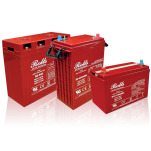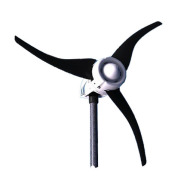Stage 1 - Design - Electrical
Probably the most important stage of any off grid installation is the design stage, sizing the new system to match our clients energy needs correctly is crucial, oversized means an inefficient & overpriced system, undersized means potential loss of power just when you need it.
So our first step is always to gather as much information as possible regarding electricity demand & heat loss for the building, in Crashpad’s case as well as undertaking an in-depth survey of the building we asked the owner Josh to go through the building & note down every electrical appliance along with power rating & then give us an idea of the average time each appliance would be used over a 24 hour period, we always say to go with ‘worst case scenario’ in Josh’s case worst case (highest electrical demand) would be a fully booked bunkhouse in mid-winter.
Next using all the gathered info we can calculate the size of the inverter charger & battery bank required, then working backwards we can size the amount of renewables needed to charge the battery bank correctly & minimise the need for the use of the diesel powered backup generator.
Nearly all large off grid installs will also need to have a backup generator as it’s in the very nature of renewables that they have a certain level of unpredictably i.e. reliant on sun & wind, a backup generator gives the security of knowing you will always have power when needed & the batteries will always be in a good state of charge, correct design of the system can greatly reduce the need for the generator to come on but there are a few factors to take into account here, for instance in certain scenarios budget can determine system sizing with clients having to way up the initial outlay cost of the potential new system against the ongoing cost of running a backup generator, all these factors are taken into account at the design stage so we can best meet clients energy & budget needs. In Josh’s case another really important factor was the eco/environmental credentials of the bunkhouse making it a prime concern to generate as much as possible of the buildings electrical needs from renewables & really minimise the need for his back generator to come on
Taking all this into account we calculated that a bank of 16 Rolls Solar AGM batteries (2 banks of 8 6V 600ah at C10 10hour discharge rate giving approx. 13kWh to 50% depth of discharge) would sufficiently meet the energy requirements of the bunkhouse with a 6kW Sunny Island Inverter.
The renewable system we recommended comprised of a 3.97kW array of PV panels and making the most of the bunkhouse’s exposed location we also recommended a 600W leading edge Wind Turbine. Micro wind is a worthwhile addition to any off grid install as the turbine has the potential to consistently trickle charge the batteries helping to keep them in good condition; it also comes into its own in the winter months when the lack of daylight reduces the Photovoltaics yield.
















